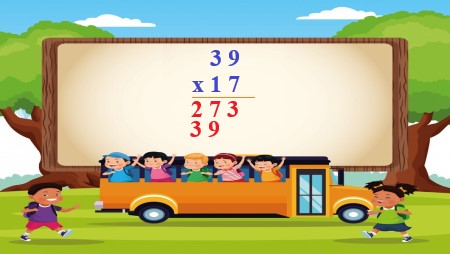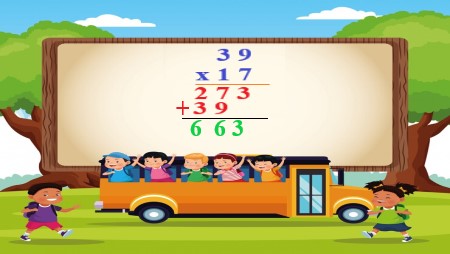Lesson Example Discussion Quiz: Class Homework |
Example |
Title: Multiplications |
Grade: 4-a Lesson: S1-L1 |
Explanation: The best way to understand multiplications is by looking at some examples. Take turns and read each example for easy understanding. |
Examples:
Step: 1a Find the product of 39 x 17 |
|
|

. |
Explanation: In this step, multiply 39 by 7. Multiply 9 by 7 to get 63. Place 3 in the one’s place, and carry 6 to the tens column. Multiply 3 by 7 to get 21. Add 21 to the carry-over of 6 to get 27. We get the answer is 273. This is the first partial product placed in one line. |
|
Step: 1b
|
|
|

. |
Explanation: In this step, multiply the bottom tens digit, which is 1, by the number on the top which is 9. So, 9 x 1 = 9. Write down the number 9 next to the 0. For 3 x 1 = 3, write down the number 3 next to the 9 that you already wrote down. This way, you will get the final answer of 390. This is the second partial product placed in another line. |
|
Step: 1c
|
|
|

. |
Explanation:
Add both of your results to get a final answer. |
|
Copyright © 2020-2024 saibook.us Contact: info@saibook.us Version: 1.5 Built: 27-Sept-2024 7:30PM EST